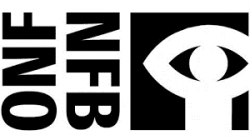On the otherwise uninhabited Gil Island, just off the northwest coast of British Columbia, the sound of waves lapping and ravens cawing is punctuated by the haunting whale calls emanating from a network of loudspeakers. Drawn to the rich food sources and quiet waters, humpback whales, pods of orca, fin whales, and porpoises eat, play, and raise their young here, in the Kitimat fjord system.
Whale researchers Hermann Meuter and Janie Wray founded the Cetacea Lab on Gil Island to study this unique marine environment. But the imminent construction of a new liquefied natural gas (LNG) exporting plant in the nearby community of Kitimat, BC, promises to bring increasing tanker traffic and noise, with unknown consequences.
Director Mirjam Leuze’s The Whale and the Raven illuminates the many issues that have drawn scientists, the Gitga’at First Nation, and the Government of British Columbia into a complex conflict. As the people in the Great Bear Rainforest struggle to protect their territory against the pressure and promise of the gas industry, caught in between are the countless beings that call this place home.
Short Synopsis (64 words)
Director Mirjam Leuze’s The Whale and the Raven illuminates the many issues that have drawn whale researchers, the Gitga’at First Nation, and the Government of British Columbia into a complex conflict. As the people in the Great Bear Rainforest struggle to protect their territory against the pressure and promise of the gas industry, caught in between are the countless beings that call this place home.
Long Synopsis (357 words)
On the otherwise uninhabited Gil Island, just off the northwest coast of British Columbia, the sound of waves lapping and ravens cawing is punctuated by the haunting whale calls emanating from a network of loudspeakers designed to bring the underwater world above ground. Into this natural silence, comes the thudding roar of a ship’s engine. As resident whale researcher Hermann Meuter observes about the jarring din, “That’s just one [ship]… only one.”
Meuter recalls that when he first saw whales in the wild, “something inside of me decided I would wrap my life around them.” The haunting and otherworldly whale songs also changed Janie Wray’s life forever. Jonny Clifton, the former chief of the Gitga’at First Nation, and his wife, Helen Clifton, Matriarch of the Gispudwada/Blackfish Clan in Hartley Bay, introduced the duo of researchers to Gil Island.
Drawn to the rich food sources and quiet waters, humpback whales, pods of orca, fin whales, and porpoises eat, play, and raise their young here, in the Kitimat fjord system.
“It is a community sharing a coast; they arrange themselves, without any aggression or fear of losing out,” explains Hermann. “These whales, in their conscious social life, they are ahead of us.”
The imminent construction of a new liquefied natural gas (LNG) exporting plant in the nearby community of Kitimat, BC, promises to bring increasing tanker traffic and noise, with unknown consequences. Director Mirjam Leuze’s The Whale and the Raven illuminates the many issues that have drawn scientists, the Gitga’at First Nation, and the Government of British Columbia into a complex conflict. As the people in the Great Bear Rainforest struggle to protect their territory against the pressure and promise of the gas industry, caught in between are the countless beings that call this place home.
Filled with animated storytelling, stunning footage, and a soundscape composed of recordings of the natural world, The Whale and the Raven is a portrait of a remarkable marine ecosystem. Beneath this wealth of beauty lies something even deeper: a reminder that our shared world requires care, vigilance, and fierce compassion if it is to continue to exist.
June 2002, northwest coast of British Columbia, Canada: it was almost dark when I sat down on a rocky outcrop on the southernmost tip of Gil Island. Except for the rhythmic lapping of the water, everything was quiet. Suddenly, against this soft backdrop of sound, I heard a huge breath. The head of a humpback whale rose above the water, only 30 feet away from me.
I had never been this close to an animal in the wild before.
In that moment, I experienced something many people report when they meet a whale up close: a deep sense of wonder and humility in the face of an unimaginably large being, residing in the depths of the ocean.
Making this film was challenging in many ways, but during difficult situations, it helped to remember this special encounter that changed my life and inspired me to embark on this journey.
HOW THIS STORY FOUND ME
Two coincidences initially led me to this story. In the 1950s, my father’s older brother emigrated from Germany to Canada and settled in the small industrial town of Kitimat, British Columbia. In 1978, as a 14-year-old teenager, I visited Kitimat for the first time.
Thirty-five years after my uncle emigrated, my husband’s best friend, Hermann, also emigrated from Germany to Canada. Together with his partner at the time, Janie, Hermann established a whale research station on Gil Island in traditional Gitga’at territory, 110 kilometres away from Kitimat.
From the first moment I visited Hermann and Janie at their research station in 2002, I was hooked. For me, they lived in one of the most spectacular natural environments I had ever seen. But only five years later, the place was under threat. When the Northern Gateway pipeline project was proposed, which included an oil tanker route between Kitimat and Asia, suddenly my whale researcher friends, as well as my family in Kitimat, were at the epicentre of a Canada-wide environmental battle. The issues around Albertan crude oil, pipelines, and oil tankers were deeply impactful for me, as I had been working as a journalist and filmmaker on the topic of extractive industries in other countries.
In the years that followed, Hermann and Janie were adopted into the Ganhada (Raven) and Gisbudwada (Blackfish) clans and became important allies of the Gitga’at Nation in their fight against oil tankers.
This was the moment when the idea for a film was born.
BEING A DIRECTOR FROM GERMANY
In 2016, many years after my first visit to Whale Point on Gil Island, I embarked on a one-year research phase in preparation for filming. My two entry points to the story were Kitimat, a town founded in the 1950s with a high percentage of Portuguese and German immigrant workers, and whale researchers Hermann and Janie, both of European ancestry as well. Yet the land where I was planning to make the film was unceded First Nations territory. Guided by Hermann and Janie, and drawing upon my training as a cultural anthropologist, we entered into a 16-month-long dialogue with the Gitga’at First Nation to create a protocol that would ensure that the filmmaking process was transparent, respectful, and collaborative.
It was an intense and, at times, painful learning period for me that encompassed topics like colonialism, exploitation by anthropologists and journalists, and the mistrust created by this complicated history. It was a struggle to reframe my role as a white filmmaker in a colonial context and to understand that documentary filmmaking can also be a highly extractive profession.
Together with the science director of the Gitga’at Nation, and producers Andrew Williamson and Henrik Meyer, we agreed to a filming protocol that recognized the Gitga’at Nation’s territories. This agreement included the creation of an advisory committee, as well as work opportunities for residents. In addition, we jointly negotiated the sharing of footage so that the Gitga’at could use it for their work and other commitments. One of the first of its kind in Canada, this protocol served us well through production and post-production.
THEORETICAL APPROACH
My approach to this film project was influenced by my study of cultural anthropology. I wanted to look at the natural and social habitat from a multitude of perspectives. In order to understand the complexity and diversity of today’s world, I believe we need to tell stories that represent the human point of view as well as the non-human perspective.
The expansion of my view on “non-human beings” is based on a recent paradigm shift in various branches of science. Under the terminology of “post-humanities” or “the Non-human Turn,” scholars are attempting to reframe thinking and perception as being the exclusive domain of humans.
For me, this theoretical discourse finds expression in the story of Janie and Hermann and their relationship with orcas and humpbacks. The two researchers consider the whales in their research area as rational, compassionate beings, deserving of equal rights and respect.
I want this film to tell an impactful story about a social and political conflict, set against the backdrop of a unique ecosystem. This larger (macro) account is mirrored in the personal story of the two researchers. By presenting the narrative from these different angles, I hope to show the interdependencies between people, the land, and the sea.
It is not my intention to judge—pitting evil industry against good whale researchers. I might not be in the position to make documentaries if my uncle had not immigrated to Canada and found a well-paying job in the aluminum smelter in Kitimat. With his salary he helped finance my father’s musical studies.
Industry is not bad per se; it can mean jobs and opportunities for development and education. However, I believe a paradigm shift is profoundly necessary in order to better safeguard the natural world. The change from seeing humanity as the “pride of creation” to simply another form of existence within a continuum of living things could fundamentally alter our perception of the world and how we treat it.
With the participation of
Janie Wray
Hermann Meuter
And
Helen Clifton
Patricia Lange
Roy Henry Vickers
La’goot Spencer Greening
Nicole Robinson
Archie Dundas
Marven Robinson
Philip Germuth
Katie Welsh
Julie Bits-Thorsen
Writer & Director
Mirjam Leuze
Editing
Sandra Brandl, BFS
Producer
Marcelo Busse
Producers
Henrik Meyer
Andrew Williamson
Shirley Vercruysse
Co-Producer
Sandra Brandl
Mirjam Leuze
Consulting Producer
Christian Vizi
Executive Producer
Sabine Bubeck-Paaz ZDF/ARTE
Shirley Vercruysse NFB
Senior Story Consultant
Narration and Original Artwork “Orca Chief”
Roy Henry Vickers
Animation “Orca Chief”
Elisa Chee
Director of Photography
Athan Merrick
Additional Cinematography
Mirjam Leuze
Simon Schneider
Underwater Cinematograhy
Tavish Campbell
Drone Cinematography
Mike Dinsmore
Composer
Jesse Zubot
Sound Design and Mix
Andreas Hildebrandt
Sound Recordist
Brent Calkin
Tyler Lucas
Millar Montgomery
Gitga’at Advisory Committee
Chris Bolton
La’goot Spencer Greening
Kyle Clifton
A Germany/Canada co-production of busse & halberschmidt, Cedar Island Films and the National Film Board of Canada, ZDF in collaboration with ARTE, TOPOS Film, with the support of the FILM UND MEDIEN STIFTUNG NRW





